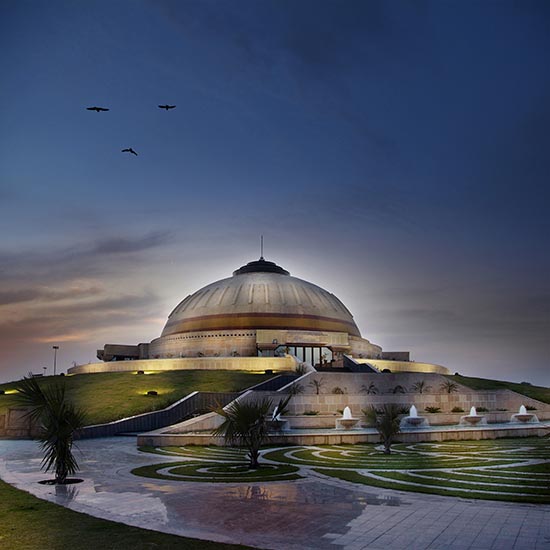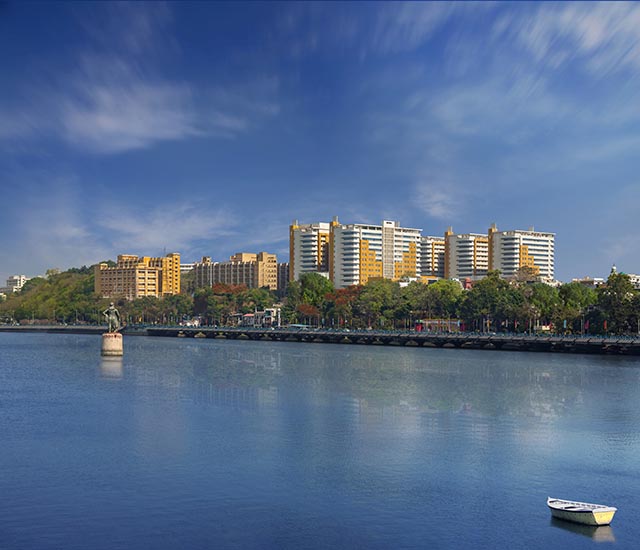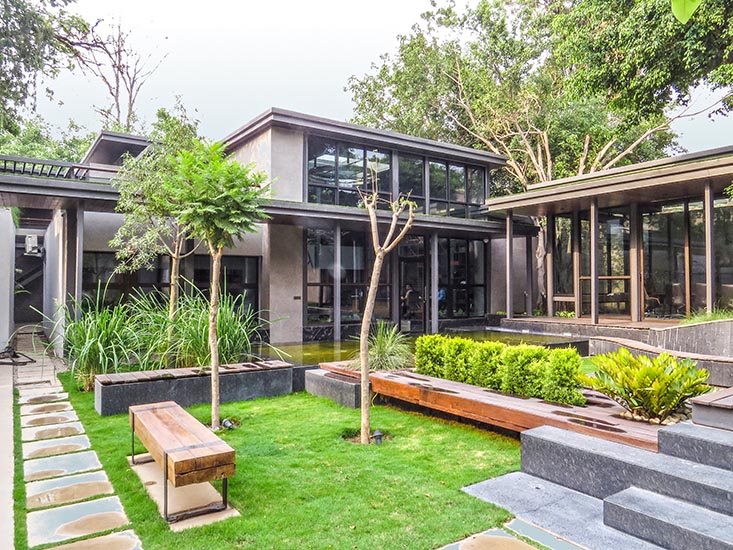
Project Name: The Lodsi Community Project for Forest Essentials Rishikesh, India
Location: Gram Lodsi, Rishikesh, Uttarakhand
Typology: Industrial Client: Mountain Valley Springs India
Architectural Firm: Morphogenesis
Principal Architect: Ar. Sonali Rastogi, Ar. Aarushi Juneja
Project Year: March 2020 Total Area: 21780 Sq.Ft. Built-up Area: 10,000 sq.ft.
Image Courtesy: Noughts & Crosses LLP
The Lodsi Community Project for Forest Essentials
Morphogenesis Designs Net-Zero Facility for Forest Essentials in the Himalayan Foothills

The Lodsi community project for Forest Essentials is nestled in the Himalayan foothills, along the banks of the river Ganges, in Rishikesh, India. The design brief stipulated by the client outlined the construction of a manufacturing facility for a modern skincare company that focuses on reviving the ancient science of Ayurveda.

The brand’s philosophy of infusing ancient wisdom with contemporary aesthetics presented the design team with an opportunity to adapt vernacular construction techniques to create a contemporary production facility.

The design approach and development of the facility was highly specific to the site’s topography, climate, and immediate context. It has been designed in a manner that does not exceed the footprint of the previously existing structure.

Furthermore, the location of the site and the limited availability of resources determined the budgetary and building constraints for the project.

Therefore, the firm set out to achieve a net-zero and energy-efficient building through an integrated design approach resulting in a free-running and off-grid production unit.

The built form draws inspiration from the traditional Garwahli ‘kholi’ (house). A rectilinear volume-oriented along the East-West axis has been planned with a central entry that divides the facility into two parts.

Functions that require a cooler environment (herb grinding, packaging, and storage) are located on the upper floor, whereas the preparatory functions with high internal heat gain are located on the lower floor.

The North-South oriented butterfly roof form allows large openable windows that allow the prevailing North-East and South-East winds for ventilation, with 80% naturally day-lit spaces and unobstructed views of the valley.
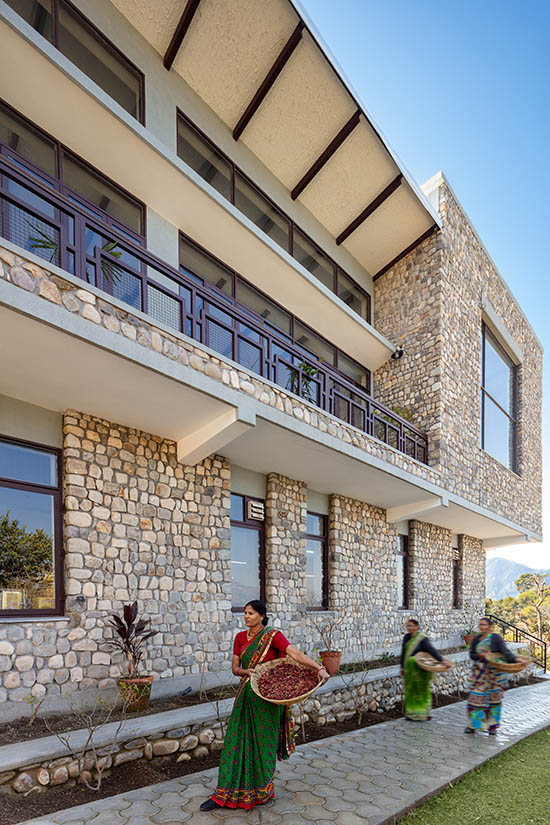
The high-volume of space with operable clerestory windows enforces Bernoulli’s principle and moderates indoor temperatures. A central light-well forms a multi-purpose communal space. This also doubles up as mother and child wellness camps and for students post-school.

Passive design strategies and indigenous construction techniques resulted in a strong architectural expression that contextually blends in and builds community pride.

Façade shading, window-to-wall ratio and building materials were optimised to ensure a high-thermal mass façade resulting in an energy-efficient building envelope with an EPI of 38kWh/m2/year.

A solar roof generating 55kWp offsets the facility’s requirements and creates a surplus to supply back to the grid, hence rendering the design ‘Energy+’. A site-specific rainwater collection, storage tank and treatment system, and an effluent treatment plant offset the water requirements.

Waste materials at the site have been repurposed and used, e.g., reclaimed wooden rafters as light fixtures, waste purlin sections as tube light holders, stone chisels as door handles, re-bar as wash basin pedestals, and others.
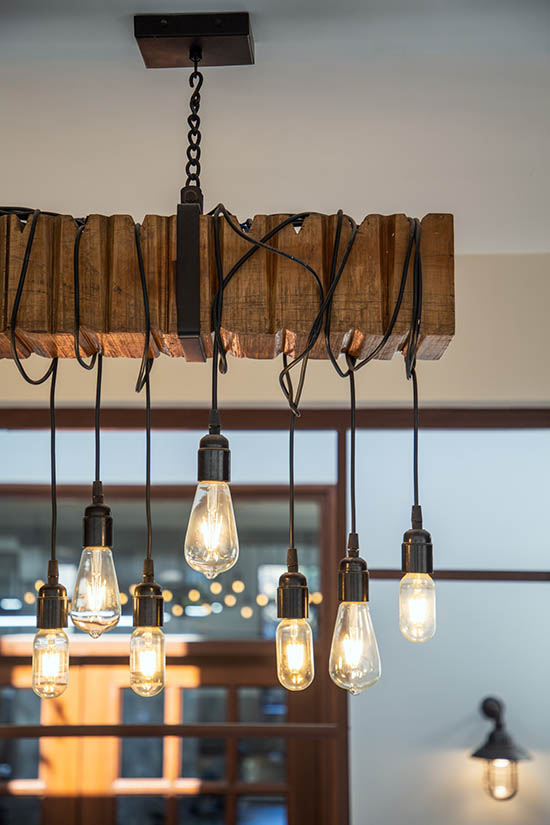
Any organic by-product is reused or composted. This project is net-zero on energy, water, and waste. The planning incorporated the existing ‘gaushala’ (cow shed) to produce milk-based products.

Sixty-five villagers built the project, and the building supports 45% of the village households directly and the entire village indirectly.

The use of vernacular materials, techniques, and village labour forms the ethos of the facility, making it “A Project for the locals, built by the locals and for the employment of the locals.

” The Lodsi Community Project addresses sociocultural and economic sustainability. It is an example of decentralised development in the post-pandemic world.

This project stayed functional through most of the pandemic, and we believe this is the exemplar for future growth across India.
About
Morphogenesis Established by Sonali and Manit Rastogi in 1996, Morphogenesis is globally recognized for its diverse work that encompasses a range of specialised practice areas – Master Planning, Residential, Commercial, Workplace, Institutional, Hospitality and Houses, through in-house integrated project delivery in Sustainability, Interiors, Landscape, Digital Technologies and Design Management. The practice operates in India, Nepal, Bhutan, Bangladesh, Sri Lanka, South Africa, Afghanistan and the UAE.

